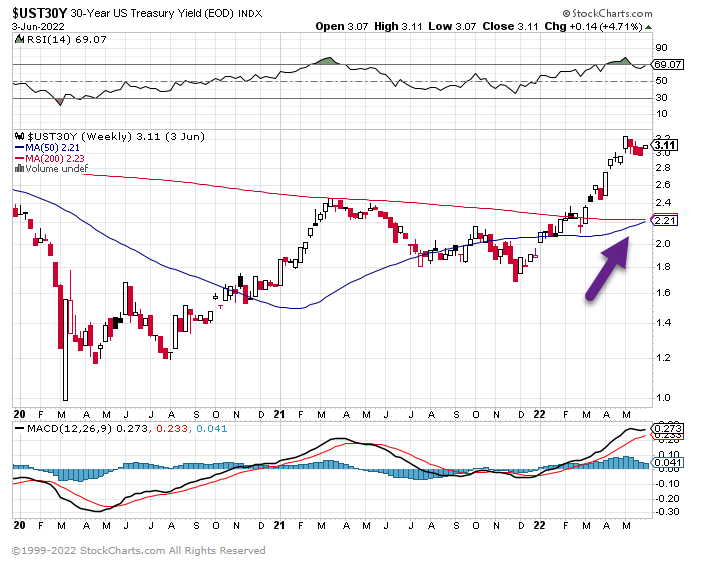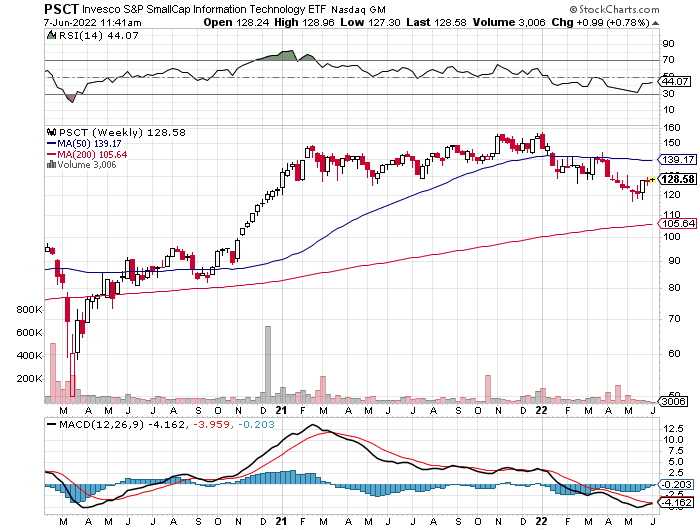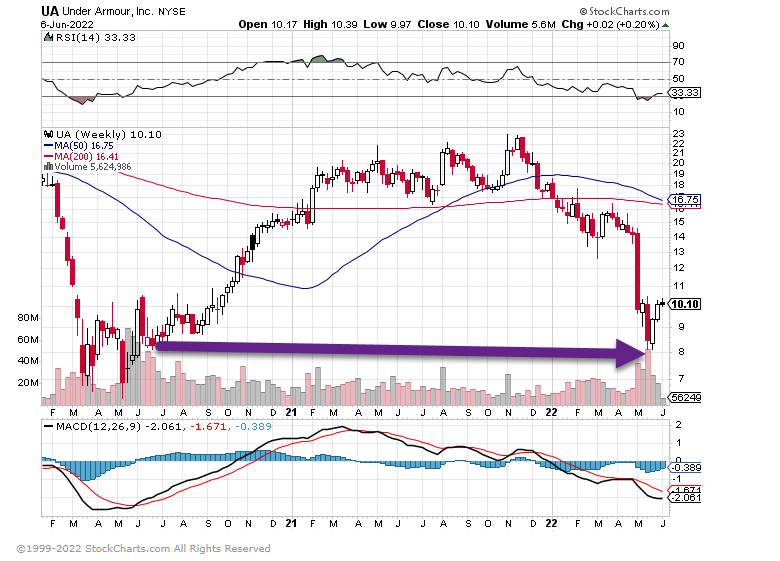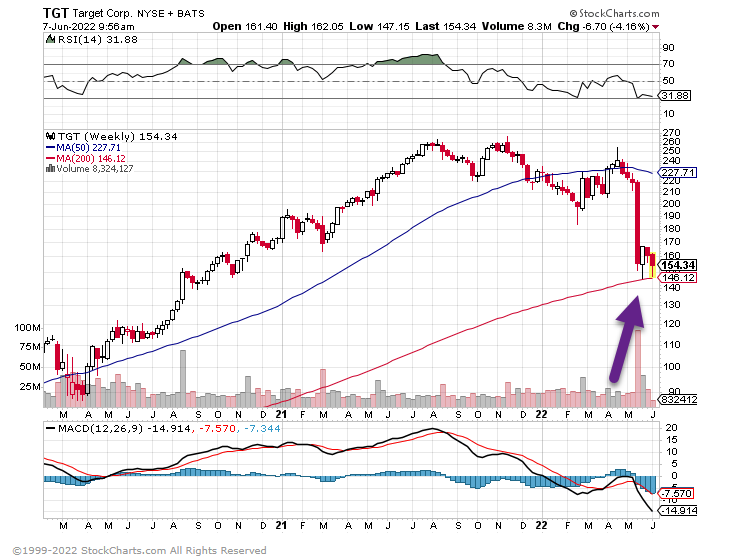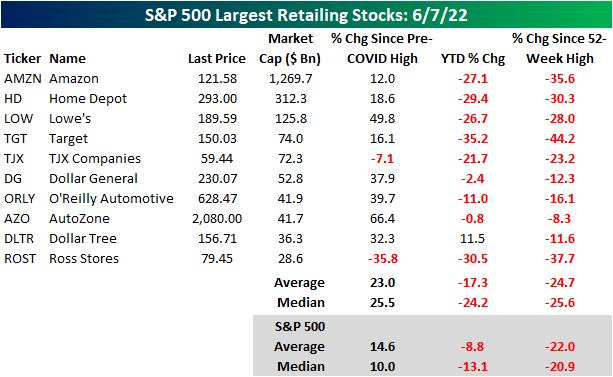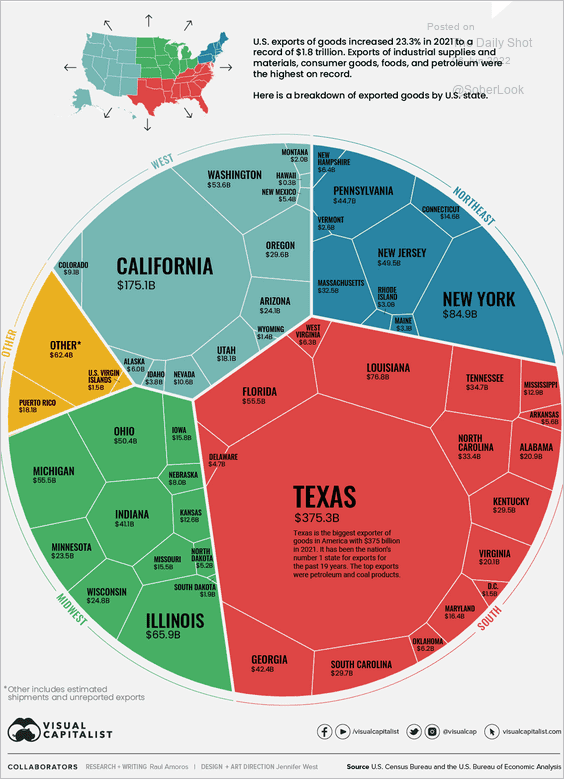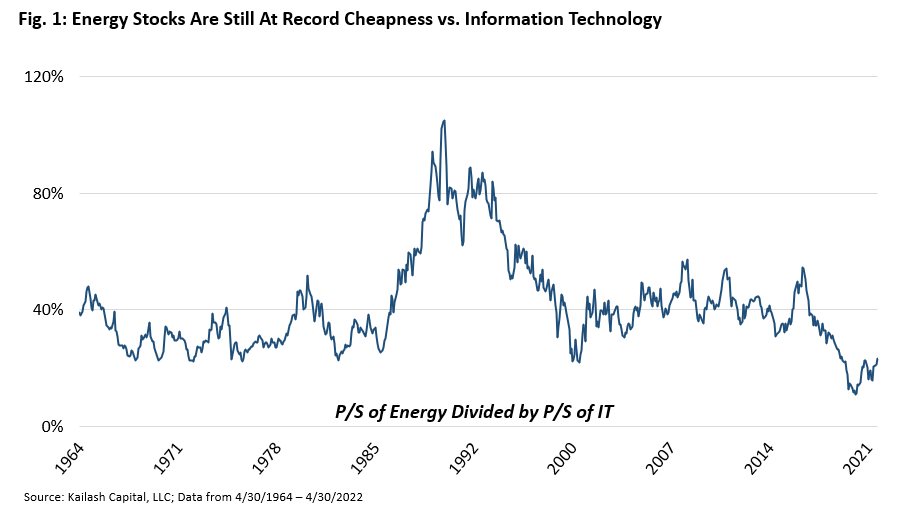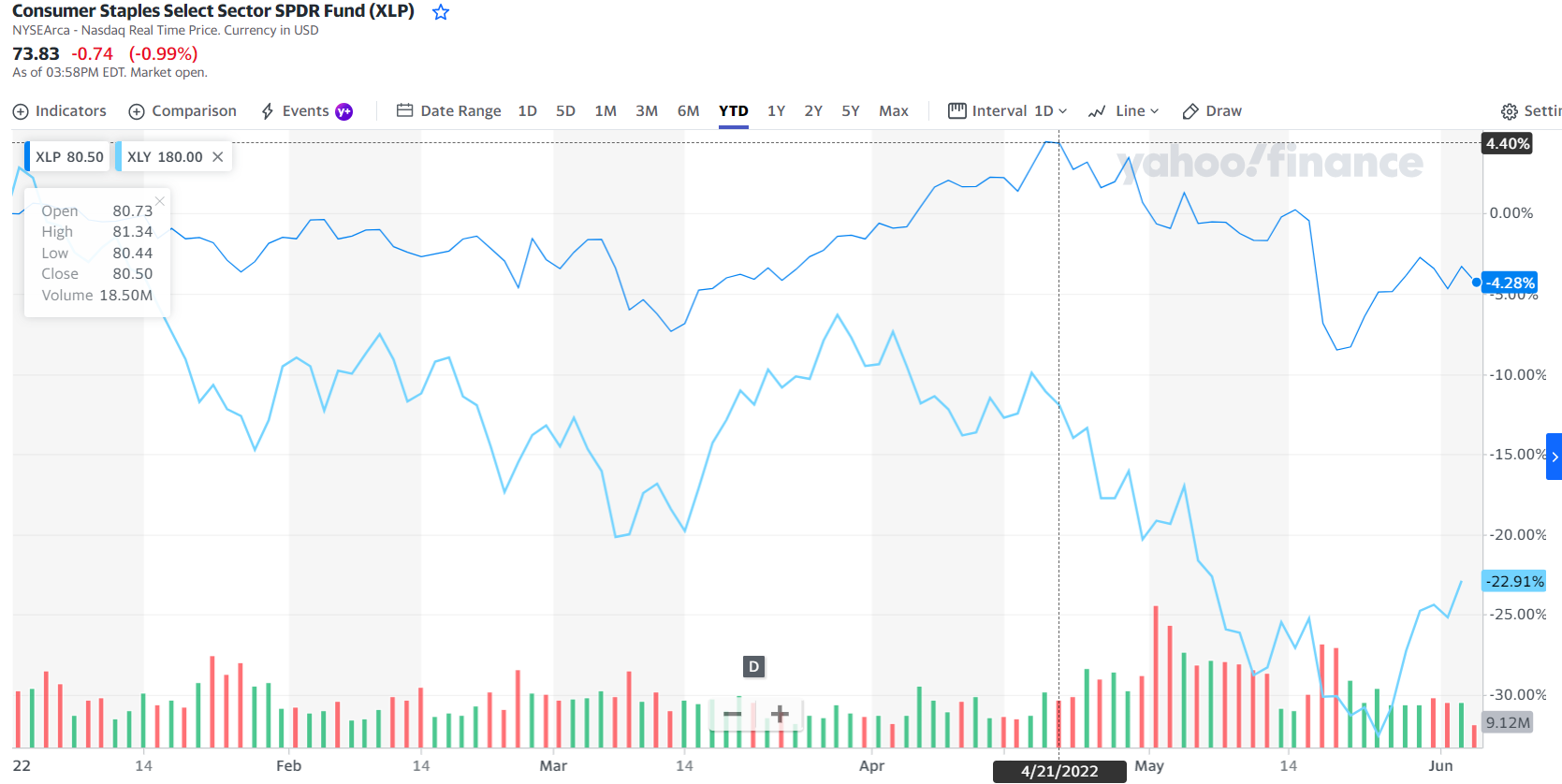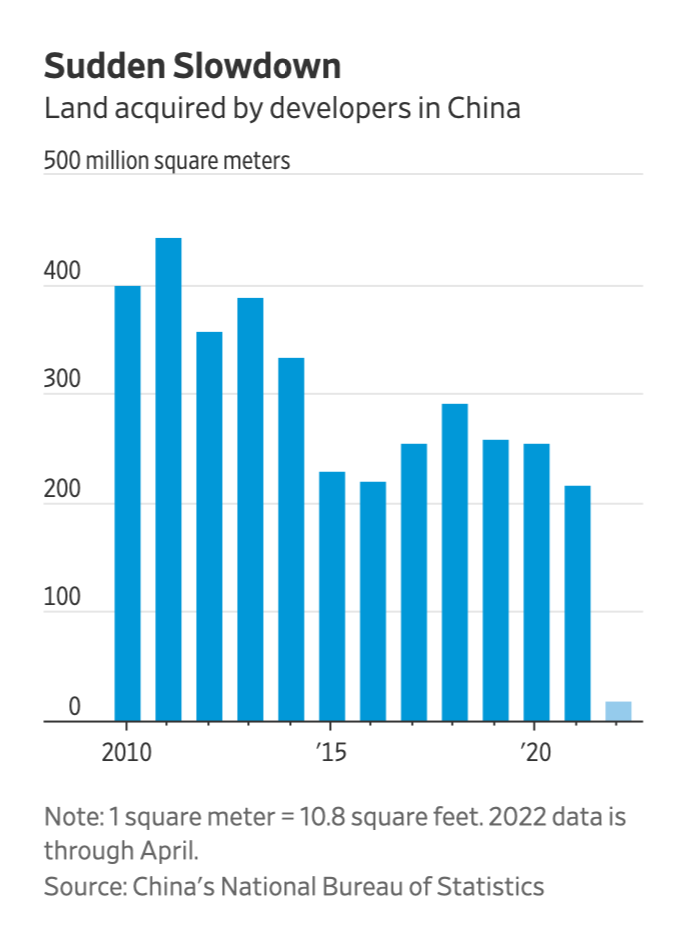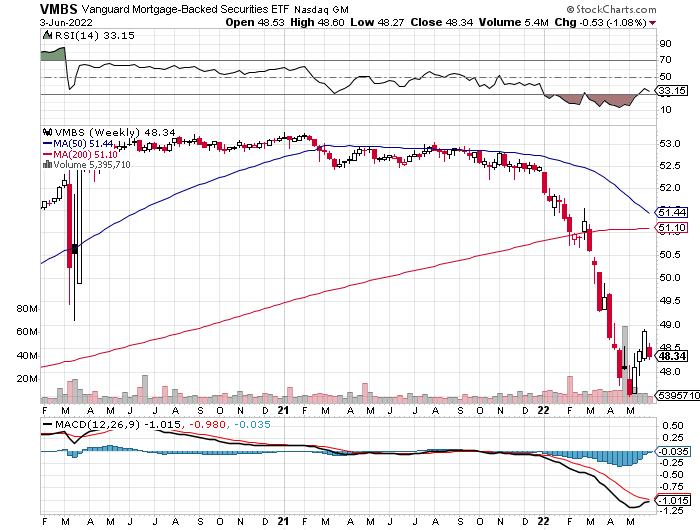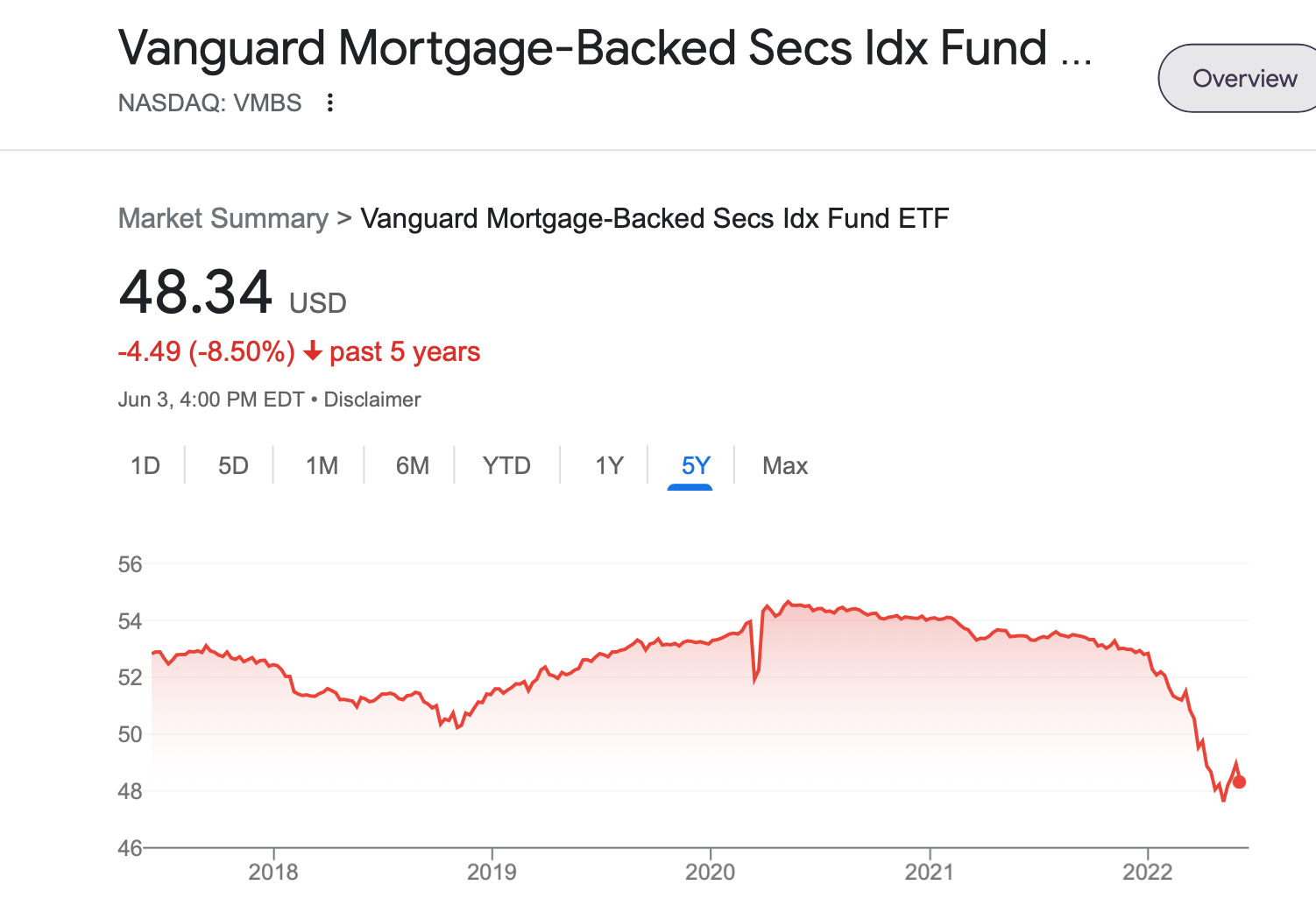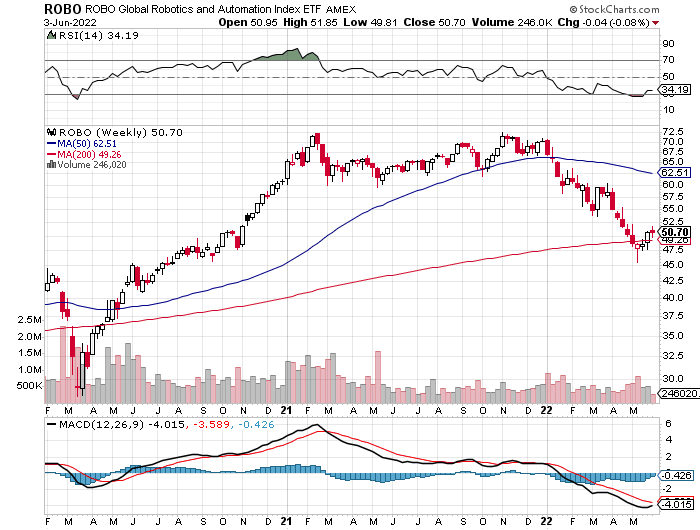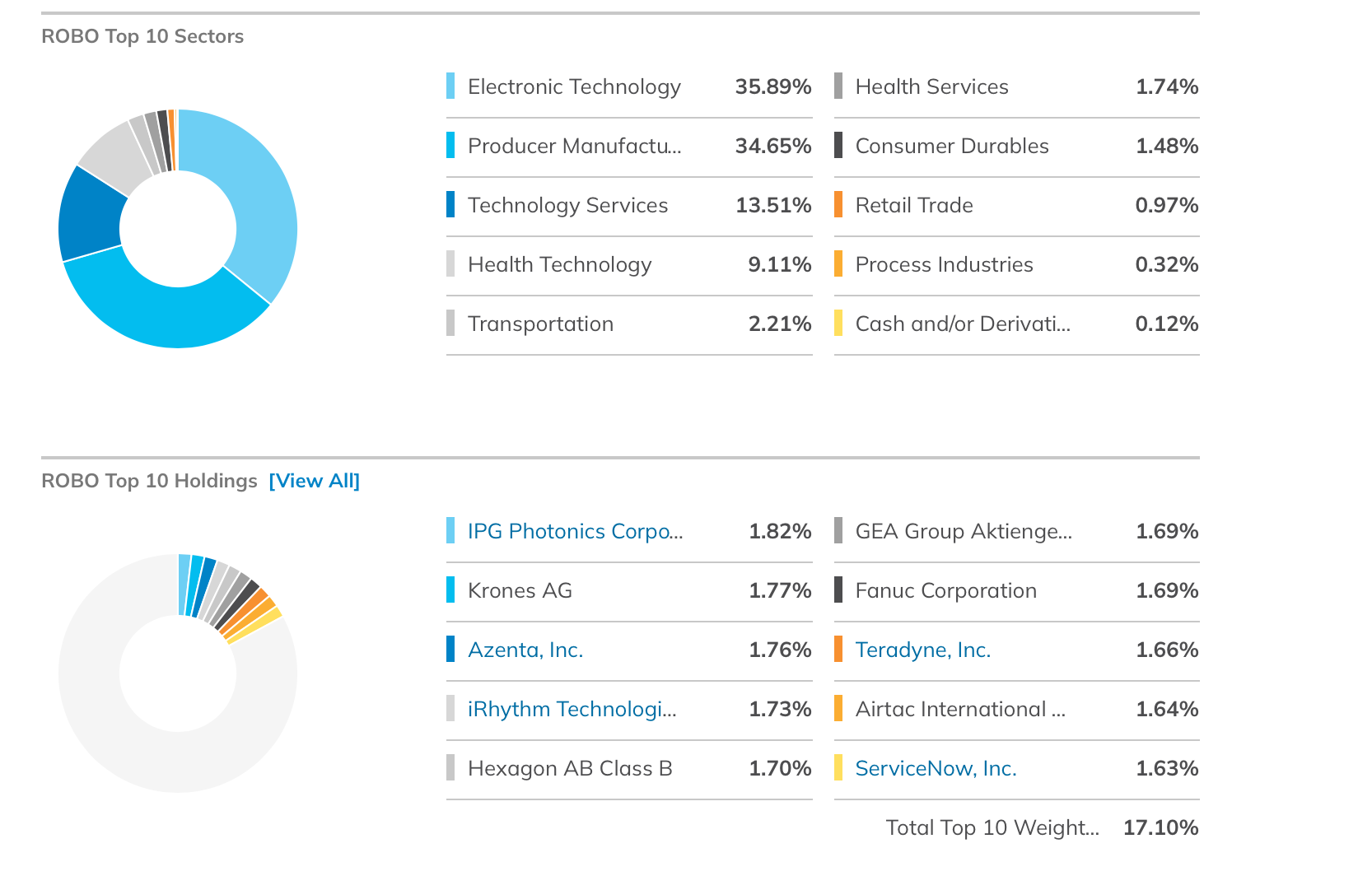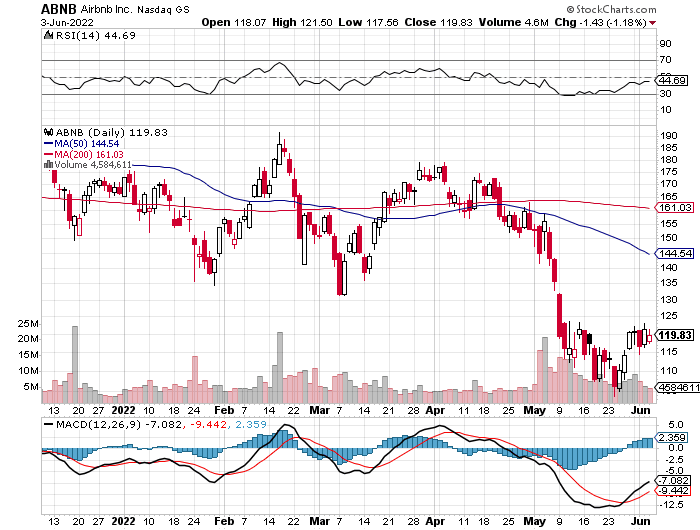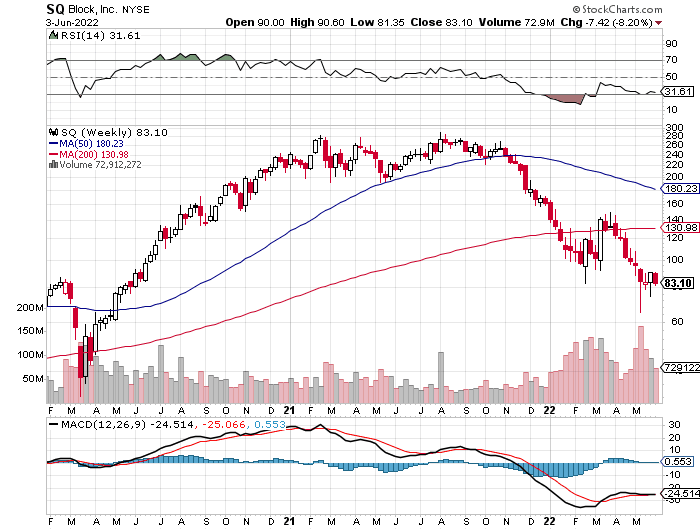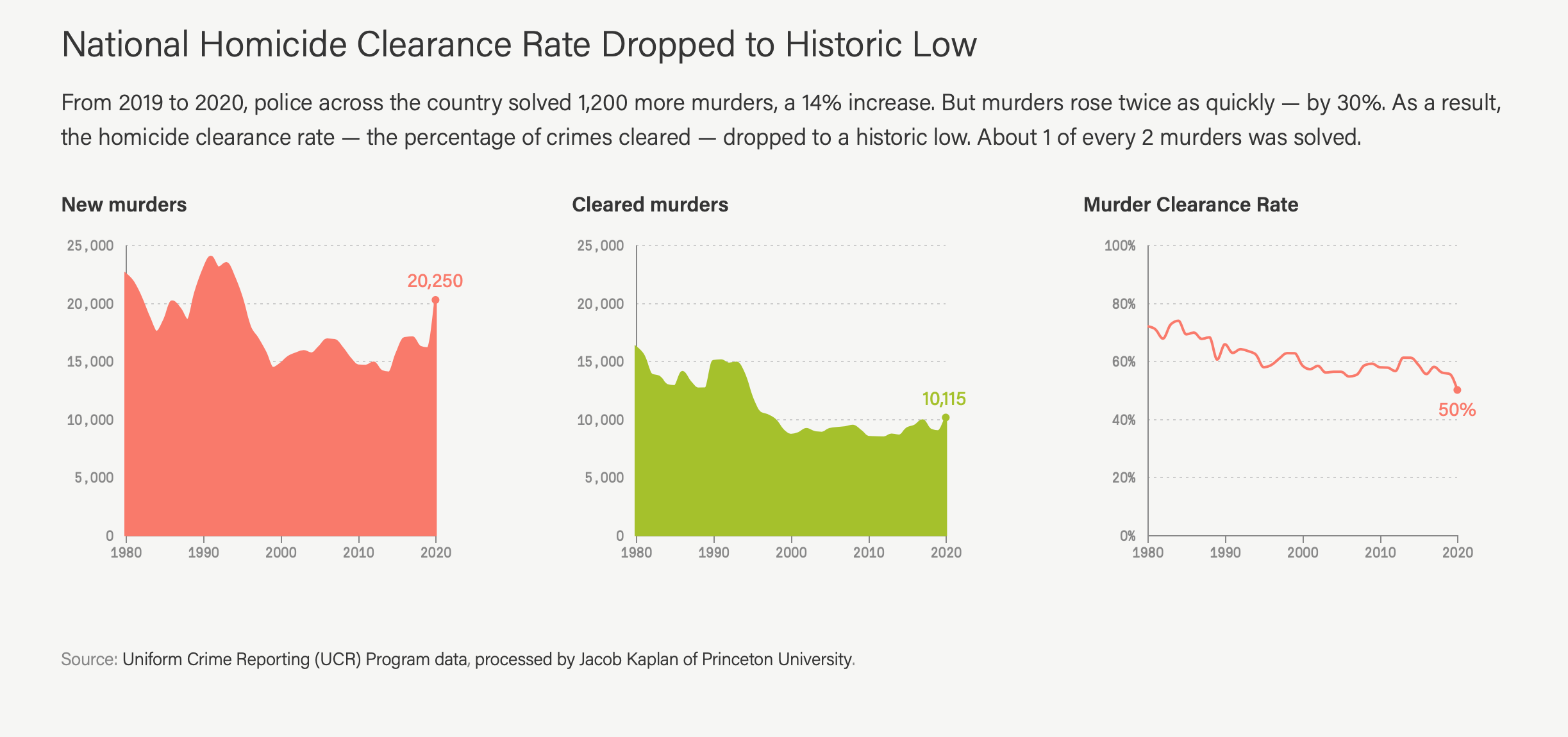1. Since Covid Lows, Gas Prices Have Tripled….Since Jan 2021 +122%
Bespoke Investment Group-Every week, we show numerous charts to illustrate key trends in the market and economy in order to try and make sense of whatever is going on in the market. These days, though, only one chart matters—prices at the pump. Heading into this weekend, the national average price of a gallon of gas approached $5, a level it will almost certainly breach over the weekend. Not only are prices at a record high, but the pace of increase has been unprecedented. Since the COVID lows, the national average price has nearly tripled. Since the start of 2021, prices are up 122%, and this year prices are up 52% in less than six months. For just about every issue facing the market these days, gas prices are in some way related to it.

https://www.bespokepremium.com/interactive/posts/think-big-blog/the-bespoke-report-6-10-22-cp-oh-my
2. Nasdaq Comp…200 Week Moving Average Major Support

3. Two Charts from Cullen Roche on the How Fast the Fed Changed Markets…Home Purchase Applications
@cullenroche

4. High Yield Bond Issuance Implodes.

Cullen Roche Funds
5. Another Look at the End of Retail Investors Playing the Options Market…The Fed Popped Speculative Bubble in Options
-70% Reduction in Call Options….I would guess 99% of retail investors lost money trading in options

6. China Total Bank Assets Double the U.S.
From Zerohedge

https://twitter.com/zerohedge
7. Crypto Winter for Retail ETFs
BITO -60% from highs

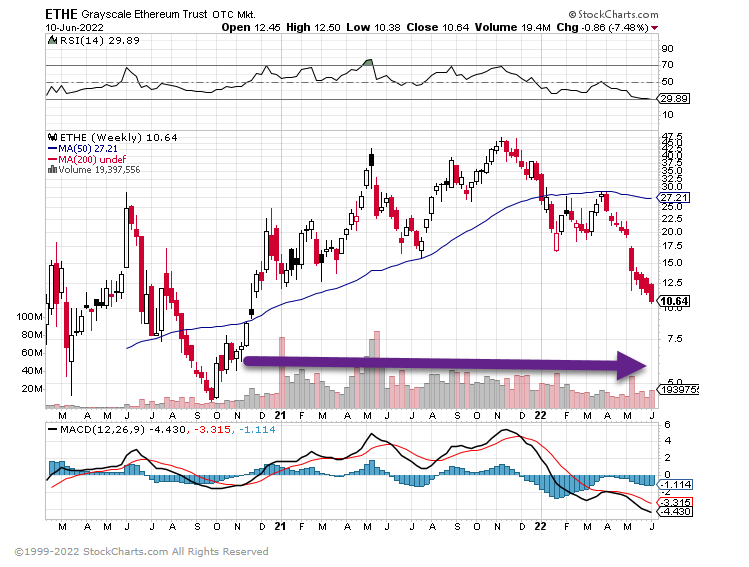
ETHE -78%

8. This Chart is Comparing XLE Energy ETF to SPDR Clean Energy ETF

9. Global Retail Stocks Down More than Technology Sector

If You Thought the Tech Rout Was Bad, Spare a Dime for Retailers
(Bloomberg) — For all that the slump in technology stocks has headlined a treacherous year for global equity markets, there’s one sector that’s faring even worse.
The MSCI World Retailing Index, which includes the likes of Target Corp., Zalando SE and Amazon.com Inc., is on track for its first negative year since 2008. The gauge was down about 29% in 2022 through Thursday, surpassing even the 24% decline of the MSCI World Information Technology Index.
The same inflation worries that have sent shivers through tech stocks are also taking a toll on retailers, leading to a squeeze on disposable incomes and pushing up costs of everything from transportation to labor. Warnings from behemoths like Walmart Inc. and Target have shaken investors, and many analysts say they may not be the last.
Thyagaraju Adinarayan, Lisa Pham and Janet Freund
https://finance.yahoo.com/
10. How Anxiety Gets Out of Control
David H. Rosmarin Ph.D.,
In a culture obsessed with control, feeling peace all the time is not realistic.
KEY POINTS
- Our culture is obsessed with control and security and expects to feel peace and happiness all the time, which is not realistic.
- When we perceive our initial physical sensations of anxiety as a reason for concern, our apprehension triggers adrenaline to release.
- Our need to get rid of anxiety increases our symptoms.
- Accepting that anxiety is normal and not inherently dangerous could stop it from spiraling out of control.
Jim is stuck in a cycle. He’s an athletic man in his 40s who works as an EMT, and he is prone to panic attacks. When panic strikes, Jim’s heart palpitates, his throat closes up, and he thinks, Oh no, I’m having a heart attack! or Oh no, I’m going to end up with super-high levels of anxiety and I’m not going to be able to tolerate it!
When Amelia describes her onrush of anxiety, she says it feels like a hurricane that gradually mounts in intensity. It starts with the stormy winds of anxious feelings, and these are quickly followed by a torrent of guilt and shame. “I judge myself for feeling anxious,” she says to me. “I get concerned that I have a disease, that I’m not strong enough and I won’t be able to handle life.”
In both of these cases—and countless others—there are actually two types of anxiety happening.
The First Type of Anxiety
The first is the initial experience of anxiety, such as Jim’s heart palpitations and Amelia’s anxious feelings. These are uncomfortable, but completely innocuous. That’s right—there is nothing problematic, dangerous, or harmful in any way with having some anxious thoughts, feelings, or sensations. In fact, the physical sensations associated with this form of anxiety are meant to be unpleasant, in order to keep us alert and aware.
The Second Type of Anxiety
The second type of anxiety involves how people respond to the first. In Jim’s case, he catastrophizes and thinks the worst. As for Amelia, she gets caught in a pattern of judgment and self-criticism. It’s this second form of anxiety that gets people into trouble.
When we perceive our initial (unpleasant but harmless) physical sensations of anxiety as a reason for concern, our apprehension triggers adrenaline to release into the bloodstream. This causes our anxiety to cascade further, which typically begets more catastrophizing and self-criticism. A vicious cycle results, and, voila—anxiety gets out of control.
The critical factor that begets and perpetuates this cycle is seeing anxiety as something we shouldn’t have. Our need to get rid of anxiety increases our symptoms. For some, it’s more like an avalanche than a hurricane, as the initial shock of recognition shakes loose layers of mental and emotional debris until the person fears being suffocated.
article continues after advertisement
The above raises a question: If the initial experience of anxiety isn’t inherently dangerous, but merely uncomfortable, why does it make us so afraid?
The Desire for Control and Security
The most compelling explanation I’ve found for this paradox is that our culture is obsessed with control. Today, we have predictions for everything, from financial markets, political elections, and flu epidemics to professional sports outcomes and the weather. And despite the fact that such predictions are notoriously incorrect—often by a wide margin—we scrutinize them as the soothsayers of ancient Rome once examined the entrails of sacrificial animals.
Along these lines, we medicalize normal mood states. What was once considered standard levels of stress in decades past is a reason for a Xanax prescription today. We expect our emotions to be totally even-keeled—we want to feel equanimity and peace and happiness all the time. As a result, we cannot handle the discomfort or perceived danger of feeling anxious and unmoored. Our inability to accept a full range of normal human emotion (including the first type of anxiety) leads our distress to intensify (the second type of anxiety).
We do all of this because our culture cannot tolerate uncertainty. We would prefer to predict the future and be completely wrong than to admit we have no clue what’s going to happen!
We are also obsessed with security. In the context of our society’s unparalleled and unprecedented affluence, we have become accustomed to a false sense of safety. When moments of threat penetrate the veil, we are thrust into panic.
Ironically, individuals who live in the third world are at an advantage when it comes to anxiety because they are less likely to expect safety or security. As such, when reality hits, it is simply understood and accepted as a part of life. Perhaps it’s for this reason that anxiety is higher in the United States than in all other nations on earth,1 and wealthier nations are substantially worse off than those with fewer resources.2
How do we stop our anxiety from getting out of control? We need to internalize that the initial experience of anxiety itself is not a problem. Nothing is wrong with you for being tense, anxious, or afraid. Anxiety is nothing to fear! In fact, the initial experience of anxiety is actually positive, since it keeps us alert, aware, and safe. Once we realize this basic concept, we never need to catastrophize about anxious feelings or judge ourselves for feeling anxious, and our anxiety is less likely to get out of control.












